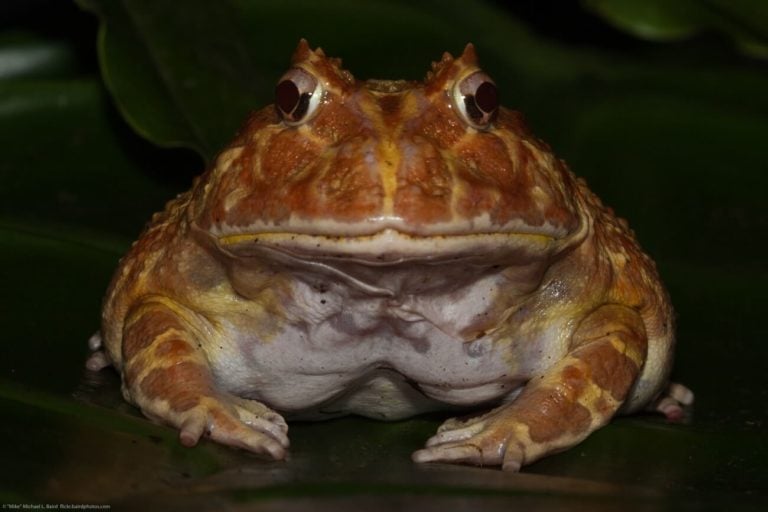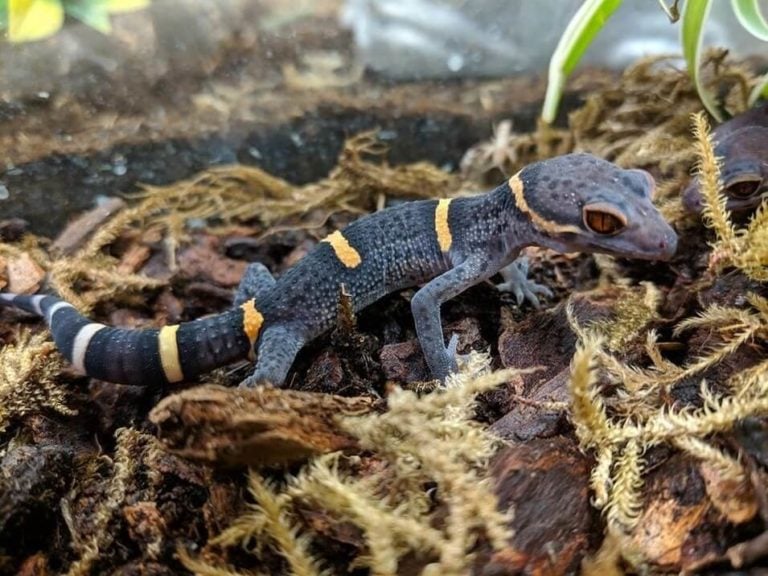The Rankin’s dragon is one of our favorite pet reptile species. These creatures are cute, low-maintenance, and very personable!
If you’re looking for a lizard that will form a bond with you (and doesn’t mind being handled), this is definitely a species to consider.
But before you run out and buy one for yourself it’s important to have a strong understanding of their habitat and care requirements. While these reptiles are not challenging to keep, it’s your job as a future owner to be as prepared as possible.
This guide will teach you everything you need to know about Rankin’s dragon care. From enclosure setup to diet, we’ve got you covered!
Table of Contents
Species Summary
The Rankin’s dragon (Pogona henrylawsoni) is a familiar-looking lizard that goes by many different names.
Depending on where you are in the world, you might see these reptiles being called Lawson’s dragon, dumpy dragon, dwarf bearded dragon, or black soil bearded dragon.
These animals are native to Queensland Australia. While it’s currently illegal to export the Rankin’s dragon, that hasn’t stopped the lizard from becoming a popular pet in the global reptile trade. They are bred by private breeders and can sometimes be found in pet stores.
They’re not as widespread as other lizard species. However, they have gained a positive reputation among reptile enthusiasts. They’re considered to be a smaller, low-maintenance alternative to more popular species.
These popular lizards are even known for their social nature, making them a great option for pet owners looking for a reptile that doesn’t mind being handled.
Difference Between A Rankin’s Dragon And A Bearded Dragon
Rankin’s dragons are frequently misidentified as bearded dragons. At first glance, it’s hard to tell the difference. But, closer inspection reveals some major distinctions.
The biggest difference between these two species is size. Rankin’s dragons are several inches smaller than a Bearded dragon. Thus, they don’t require a huge enclosure like their bigger cousins do.
You’ll also notice that Rankin’s dragons have rounder heads and more variety in their color morphs. Both species have that heavily textured skin and iconic “beard.” However, it’s much more subdued with Rankin’s dragons.
There are some noticeable differences in behavior as well. Rankin’s dragons are far more social and even-tempered than bearded dragons. They can be kept in small colonies and usually don’t mind being handled.
Lifespan
The average lifespan of a healthy Rankin’s dragon is between six and ten years. Some owners have reported these lizards living up to 15 years. But, that’s quite rare.
Like any other pet, there are no guarantees when it comes to life expectancy. They will respond poorly to substandard living conditions and lackluster care. Not only that, but they can be susceptible to disease.
The best thing you can do is provide them with the best care possible. Staying on top of their diet and husbandry needs will keep them happy and healthy for years to come.
Appearance
When it comes to appearance, Rankin’s dragons have many iconic characteristics. Their bodies are relatively slender and they have larger rounded heads.
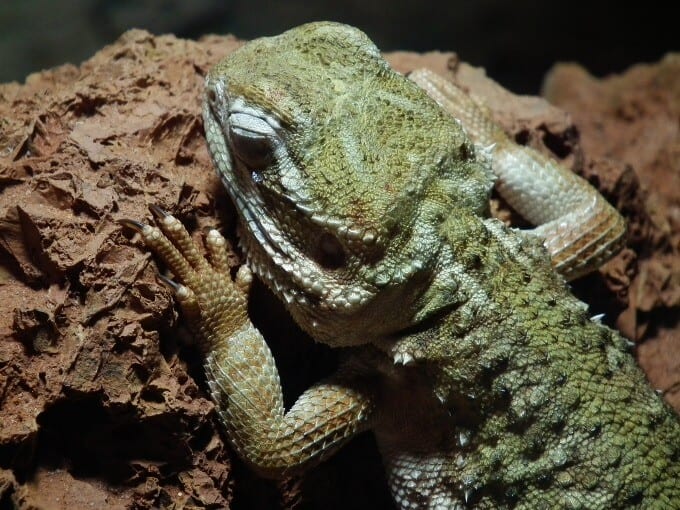
The main part of their body is covered in rough skin. Usually, these lizards will have raised bumps and thorn-like protrusions everywhere. Don’t worry: that rough texture won’t hurt your skin.
In most cases, the unique physical features of the skin are difficult to see. That’s because these lizards have striking color patterns. The coloration of the Rankin’s dragon is meant to provide camouflage in the wild.
As a result, you’re going to see a lot of natural colors like brown, green, and gray. As we mentioned earlier, the coloration of the Rankin’s dragon is much more sporadic than what you’d see on a bearded dragon.
Morphs vary widely from lizard to lizard. Some could have eye-catching stripes while others take on a more spotted look. These color patterns extend throughout the back of the reptile. On the belly, they usually have a lighter solid color.
Average Size
On average, an adult Rankin’s dragon will reach a full size of 10 to 12 inches in length. Females tend to be slightly longer and girthier than males. This is to accommodate eggs when fully matured.
Expert Tip: Their length can be influenced by a number of different factors, with genetics and care being the most impactful. If you want these reptiles to get as large as possible, do whatever it takes to keep them healthy!
Rankin’s Dragon Care
The base requirements of Rankin’s dragon care are very similar when you compare them to their more popular cousin. However, the smaller size and easy-going attitude of the Rankin’s dragon does make things a bit easier to manage.
The trick to keeping these lizards in good shape is to provide an enriching environment and a high-quality diet. Here are some care guidelines to follow when raising a Rankin’s dragon.
Enclosure Size
The most important investment you’re going to make for your Rankin’s dragons is the enclosure.
These lizards do best in a glass enclosure that’s adequately ventilated. This means at least one side should be covered in durable mesh or a high-quality screen.
Most owners utilize enclosures that have a screened top and sliding glass doors on the front. The front doors will provide easy access to your lizard while the screen helps maintain humidity levels.
But while Rankin’s dragons are small, that doesn’t mean that you can stick them in a tiny enclosure.
We recommend going with a tank that measures about 48 inches wide, 24 inches long, and 24 inches high. This is roughly the size of a 40-gallon tank.
You can pick from one of these enclosures to get started. They apply for both species.
Expert Tip: An enclosure of this size is good for a single lizard. If you plan on keeping a small group, you’ll need something much larger. The key is to provide your lizards with ample room to explore.
What To Put In Their Enclosure
Rankin’s dragons are semi-arboreal. This means that they do spend some time climbing and basking in high places.
However, you don’t need to create the massive vertical space that you would with other species.
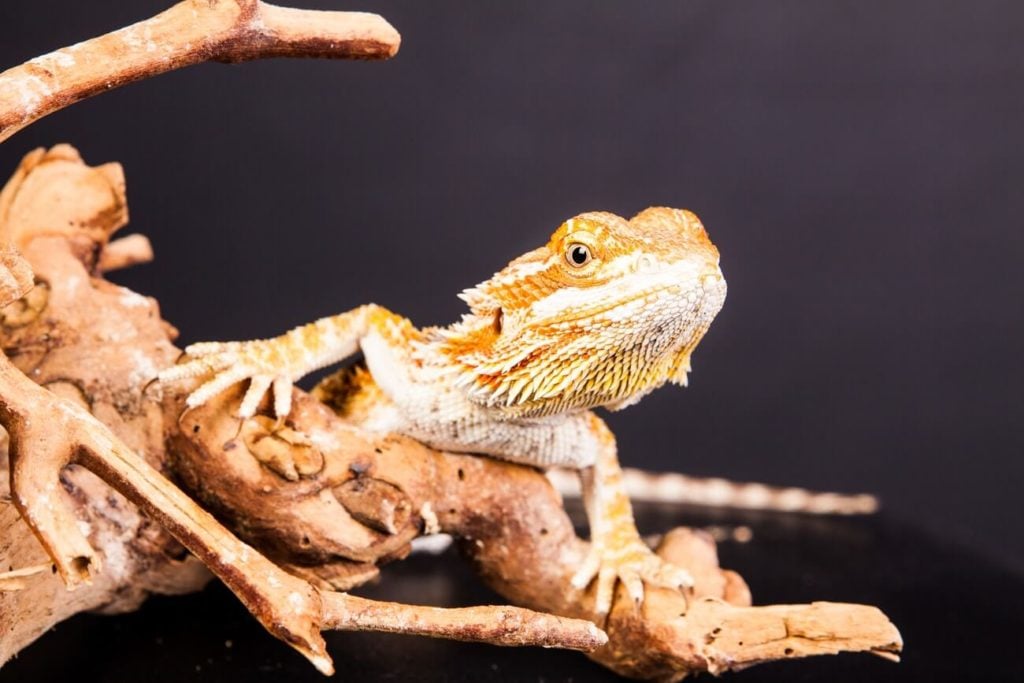
Some strategically spaced branches, climbing bridges, and vines work well. You can also incorporate a reptile hammock and several slate rocks throughout the habitat for basking.
Those climbing accessories will provide enrichment for your lizard while also giving them the means to move around the enclosure.
Expert Tip: Examine those branches, rocks, and vines closely. These lizards are prone to jumping, so you’ll need to ensure that there are no protruding parts that could cause injury.
Another important thing to put in their habitat is plants. You can use real or fake plants, too. The plants add some movement and enrichment. They can also double as shelter whenever your lizard needs some light protection.
Of course, the Rankin’s dragon shouldn’t rely on plants alone for safety. Shelters are essential for these lizards. Make sure that your enclosure has at least one shelter in it.
Multiple shelters are even better if you have enough space. Just make sure they’re big enough for the reptile to fit in without getting stuck!
At the bottom of the enclosure, you have several options for substrate material. Rankin’s dragons aren’t picky, so you can choose a material that’s convenient for you. Some owners will utilize solid materials that are easy to replace during cleaning. This includes paper towels, newspapers, shelf liners, and even tile.
A soft substrate is good too. If you want to mimic their natural habitat, you can use a mixture of sand, potting soil, and clay. Alternatively, there’s also reptile sand or dry coconut fiber.
Avoid gravel or any other substrate with pieces that the lizard can swallow.
Temperature & Lighting
Rankin’s dragons live in the dry heat of Northeastern Australia. They don’t do very well in colder temperatures.
Ideally, your lizard’s enclosure should have a gradient temperature.
This means that one side of the habitat will be hotter while the other will be cooler. This makes it easy for Rankin’s dragons to regulate their temperature on their own.
Here are the temperatures to aim for during the day:
- 80°F on the cool end
- 100°F to 110°F on the opposite end (use a basking light to warm things up)
The light should be kept on between 10 and 12 hours every day.
At night, leave the lights off. These lizards need that day and night cycle to stay healthy. If temperatures in your area drop to the low 70s at night, you may need to invest in a ceramic heat emitter to keep temperatures stable.
Another important source of light you’ll need is a UVB bulb. Rankin’s dragons need UVB rays to get Vitamin D, which helps to metabolize calcium. Without it, these lizards can experience bone disease and a host of other health issues.
A 10 or 12-percent UVB lamp is suitable. Most of the enclosure needs to be exposed to this light for 12 to 14 hours a day.
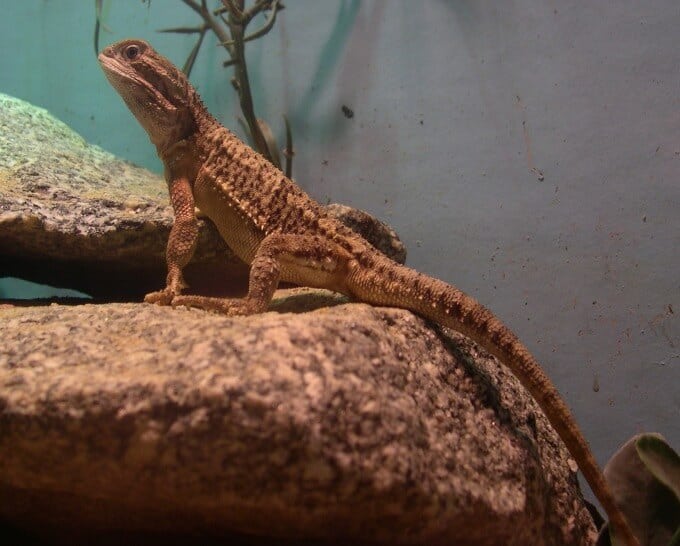
To save time, pick one from our list of the best bearded dragon UVB lights. Make sure to replace the bulb every six months to avoid any potential health problems.
Humidity
Moderate humidity is best for Rankin’s dragons. They prefer humidity levels to be around 40 percent.
You can achieve this with an automatic misting system or by simply misting the tank manually every day.
It’s a good idea to invest in a hygrometer to get things just right. Too much humidity could lead to respiratory infections and premature shedding.
Water
Rankin’s dragons stay hydrated in several different ways. They may lap up water droplets on plant leaves or use humidity in the air to stay healthy.
That said, it’s still important to provide a dish of clean water. Not all lizards are going to drink from this dish. However, they will probably soak in it.
Provide a large dish that your Rankin’s dragon can easily climb into. Make sure that it’s relatively shallow and tip-proof.
Expert Tip: It’s crucial to stay on top of the water quality in this dish. Due to the high temperatures, mold and bacteria can collect pretty quickly. Replace the water regularly to keep your lizard safe.
Food & Diet
These reptiles are omnivores that thrive on insects and vegetables. They will accept many different kinds of foods, so it’s important to mix things up.
As a good rule of thumb, about 60 percent of their diet should consist of insects while the remaining 40 percent is vegetables.
Some good insect staples include:
- Crickets
- Black solider fly larvae
- Silkworms
- Mealworms
- Dubia roaches
- Waxworms (these should be given as the occasional treat, not regularly)
As for vegetables, you can try the following foods:
- Collard greens
- Arugula
- Turnip greens
- Dandelion
Adult Rankin’s dragons should be fed daily. To avoid health issues, you can dust food with calcium supplements a few times a week as well.
Possible Health Issues
There are a handful of diseases that Rankin’s dragons are susceptible to. These issues can affect a wide range of reptiles raised in captivity, not just this species.
Some of the most common issues are respiratory infections and yellow fungus. Respiratory infections are often caused by excess moisture in the air. It causes tissue in the mouth and nostrils to become inflamed.
Yellow fungus is caused by unsanitary living conditions. It’s a contagious illness that causes patchy scales to form. Some lizards can also experience extreme shedding.
The best way to avoid yellow fungus is to keep the enclosure clean. Perform spot cleanings regularly and pick up messes every week. Then, do deep sanitizations once a month to keep bacteria at bay.
Behavior & Temperament
The neat thing about Rankin’s dragons is that they do very well in small colonies of three. All females can be kept together without any major issues.
However, that’s not the case with males.
Multiple males kept in an enclosure could lead to fighting. These lizards tend to get territorial in the presence of another male. So, if you plan on keeping more than one Rankin’s dragons, keep two females and a male together.
Expert Tip: Rankin’s dragons can be skittish and shy when they are young. These lizards are known to hide out during the day.
However, they will get much more comfortable when they get older. Before you know it, you’ll find your pet exploring the enclosure and basking in the light.
Handling Them
Rankin’s dragons tolerate handling very well as adults. Many owners will even let them roam around outside of the enclosure!
If you plan on doing this, just make sure that the room is safe and doesn’t have any hiding spaces your lizard can run to.
You may notice the lizard trying to climb on the glass. This is often viewed as a form of begging. If the room is safe and secure, take that opportunity to handle the lizard.
Let the reptile climb onto your hand. Or, support the lower half of the body and gently lift up. In most cases, Rankin’s dragons will have no problem going into your hand willingly!
Expert Tip: One important note about handling Rankin’s dragons: always wash your hands! Contagious diseases, such as the Yellow Fungus we went over earlier, easily spread. To avoid spreading that bacteria to other reptiles and pets, wash your hands before and after handling your lizard.
What Are You Waiting For?
Rankin’s dragon care is pretty much as easy as it gets. These reptiles are low-maintenance, and a ton of fun to own.
We recommend these lizards to other herp-lovers all the time! In our opinion, there’s really no downside to owning one.
If you still have some questions about this species we’re more than happy to help you out. Just reach out to us via our website and we’ll do our best to answer your question!

